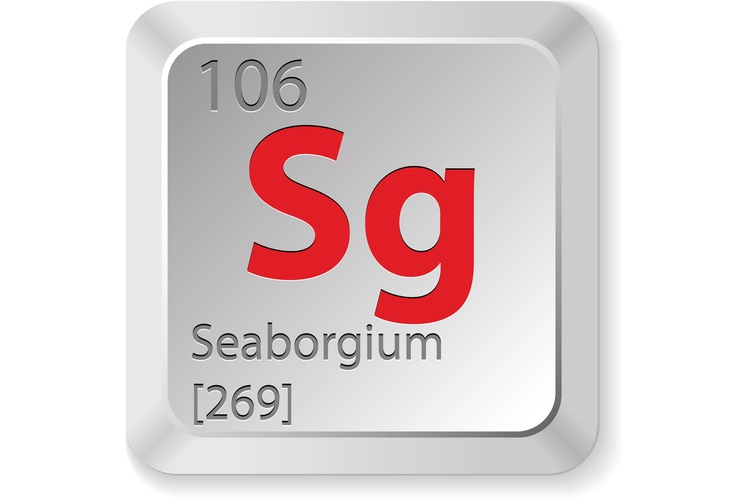Facts About Seaborgium

Atomic Number: 106 Atomic Symbol: Sg Atomic Weight: (269) Melting Point: Unknown Boiling Point: Unknown
Word Origin: Seaborgium was named for influential American chemist Glenn Seaborg, who was on teams that discovered americium, plutonium, nobelium, mendelevium, berkelium, californium, curium and thorium. He received the Nobel Prize in Chemistry in 1951.
Discovery: Seaborgium was first reported in June 1964 by a team of scientists in Dubna, Russia. They bombarded lead isotopes — 206Pb, 207Pb and 208Pb — with ions of chromium-54 (54Cr) through a cyclotron, producing ions of 259Sg. The results were understood through microscopically examining foils that were exposed to a rotating target disc during bombardment. The foils were used to detect spontaneous fission, then etched and microscopically examined to detect fission tracks and half-lives of fission activity. Other experiments were done to aid in the confirmation of the discovery.
In September 1964, Albert Ghiorso’s team in Berkeley claimed to have produced the element through methods “without any scientific doubt” — implying that the Dubna team’s results were suspect. The Berkeley team bombarded atoms of californium-249 (249Cf) with oxygen-18 (18O) ions using the Super-Heavy Ion Linear Accelerator. In 1993, the Berkeley team’s research was confirmed and they were credited with the discovery.
Properties of seaborgium
Seaborgium is a synthetic element about which little is known. It is presumed to be a solid metal, but since only a few atoms of it have been created, it is difficult to study. [See Periodic Table of the Elements]
Seaborgium has 12 isotopes with known half-lives. The most stable is 271Sg, which has a half-life of about 2.4 minutes.
For naturally occurring elements, the atomic weight is calculated from averaging the weights of the natural abundances of the isotopes of that element. However, for manmade transuranium elements, there is no "natural" abundance. The IUPAC convention is to list the atomic weight of the longest-lived isotope in the periodic table. These atomic weights should be considered provisional since a new isotope with a longer half-life could be produced in the future.
Sources of seaborgium
Seaborgium is produced artificially and only small amounts have been made.
Uses of seaborgium
Only a few atoms of seaborgium have ever been made. Currently, its use is solely for scientific study.
(Sources: Los Alamos National Laboratory, Jefferson Lab)
Sign up for the Live Science daily newsletter now
Get the world’s most fascinating discoveries delivered straight to your inbox.











